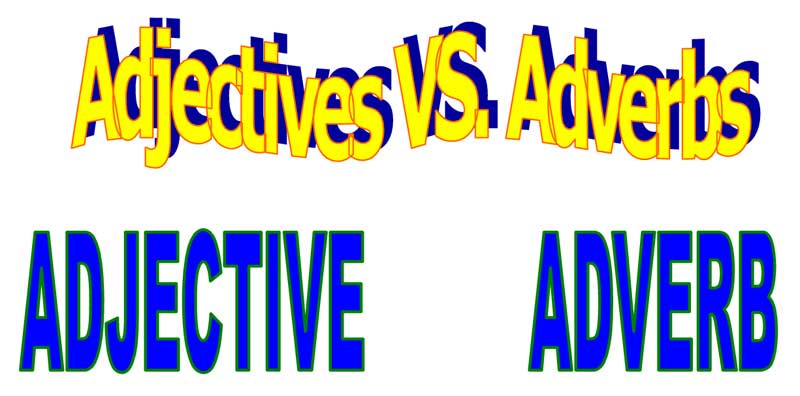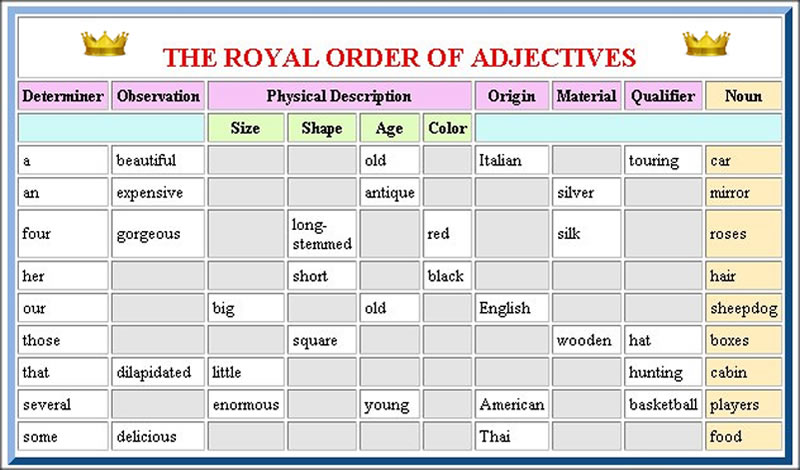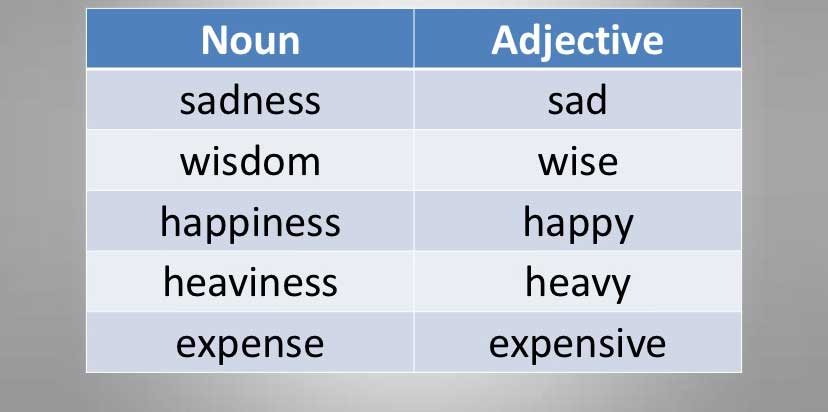
Adverbs and adjectives have important characteristics in common — in particular their gradability, and the fact that they have comparative and superlative forms. However, an important distinguishing feature is that…

When two or more adjectives come before a noun, their relative order is fixed to a certain degree. This means, for instance, that while complex mathematical studies is grammatically acceptable,…

We saw in an earlier section that many adjectives can be identified by their endings. Another major subclass of adjectives can also be formally distinguished by endings, this time by…

We have seen that attributive adjectives occur before a noun which they modify, for example, red in red car. We need to distinguish these clearly from nouns which occur in…

As their name suggests, STATIVE adjectives denote a state or condition, which may generally be considered permanent, such as big, red, small. Stative adjectives cannot normally be used in imperative…

Most attributive adjectives denote some attribute of the noun which they modify. For instance, the phrase a red car may be said to denote a car which is red. In…

Most adjectives can occur both before and after a noun: the blue sea ~ the sea is blue the old man ~ the man is old happy children ~ the…





